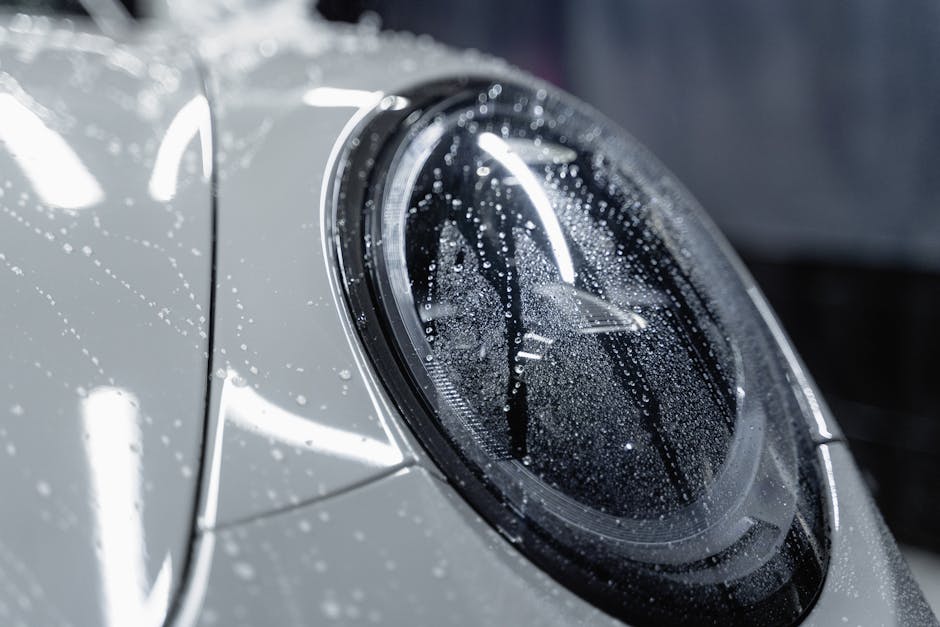How Car Lighting Technology Has Improved
The evolution of car lighting technology has been nothing short of remarkable. From the early days of simple oil lamps to today’s advanced adaptive LED and laser headlights, automotive lighting has undergone significant transformations, enhancing safety, efficiency, and aesthetics. This article explores the key milestones in car lighting technology, the latest innovations, and what the future holds for this essential aspect of modern vehicles.
The Early Days: Oil Lamps and Acetylene Lights
In the late 19th and early 20th centuries, automobiles relied on primitive lighting solutions. The first cars used oil lamps, similar to those found in horse-drawn carriages. These lamps provided minimal illumination and were highly unreliable, especially in adverse weather conditions.
By the early 1900s, acetylene gas lamps became popular. These lamps burned acetylene gas, producing a brighter flame than oil lamps. However, they required manual ignition and were susceptible to extinguishing in rain or strong winds. Despite these drawbacks, acetylene lamps were a significant improvement and remained in use until electric lighting became viable.
The Advent of Electric Headlights
The introduction of electric headlights in the 1910s marked a major turning point. Cadillac was one of the first automakers to integrate electric lighting systems in 1912, using tungsten filament bulbs. These headlights were more reliable and brighter than their predecessors, significantly improving nighttime driving safety.
By the 1920s, electric headlights became standard in most vehicles. The development of the sealed-beam headlight in the 1930s further enhanced durability and performance. These single-unit headlights were more resistant to moisture and provided a more focused beam, making them the industry standard for decades.
Halogen Headlights: A Brighter Future
In the 1960s, halogen headlights revolutionized automotive lighting. These bulbs used a tungsten filament enclosed in a small quartz capsule filled with halogen gas, which allowed them to burn brighter and last longer than traditional incandescent bulbs.
Halogen headlights quickly became the dominant technology due to their efficiency and affordability. They provided better visibility and were easier to replace, making them a favorite among automakers and consumers alike. Even today, many budget-friendly vehicles still use halogen lighting, though they are gradually being replaced by more advanced alternatives.
Xenon HID Lights: A Leap in Brightness and Efficiency
The 1990s saw the introduction of High-Intensity Discharge (HID) headlights, also known as xenon lights. Unlike halogen bulbs, which rely on a heated filament, HID lights produce light through an electric arc between two electrodes in a xenon gas-filled chamber.
HID headlights are significantly brighter and more energy-efficient than halogen bulbs, emitting a crisp white or bluish light that closely resembles daylight. This improved visibility, especially on dark roads. However, HID systems were more expensive and required complex ballasts to regulate voltage, limiting their adoption to premium vehicles initially.
LED Lighting: The Modern Standard
Light-Emitting Diode (LED) technology has transformed automotive lighting in the 21st century. LEDs are highly energy-efficient, durable, and capable of producing extremely bright light with minimal power consumption.
One of the biggest advantages of LED headlights is their flexibility in design. Automakers can create sleek, futuristic lighting signatures that enhance a vehicle’s aesthetics. Additionally, LEDs have a much longer lifespan than halogen or HID bulbs, reducing maintenance costs.
Beyond headlights, LEDs are now widely used in daytime running lights (DRLs), taillights, brake lights, and interior lighting. Their instant-on capability improves safety by providing faster illumination than traditional bulbs.
Adaptive and Matrix LED Headlights
Recent advancements have led to the development of adaptive LED headlights, which adjust their beam pattern based on driving conditions. These systems use sensors and cameras to detect oncoming traffic, road curvature, and speed, automatically dimming or redirecting light to avoid blinding other drivers while maximizing visibility.
Matrix LED technology takes this a step further by dividing the headlight into multiple individually controlled segments. This allows the system to selectively dim specific areas while keeping others illuminated, ensuring optimal lighting without glare. Brands like Audi (with their Matrix LED system) and Mercedes-Benz (with Digital Light) have pioneered these innovations.
Laser Headlights: The Cutting Edge
Laser headlights represent the pinnacle of automotive lighting technology. First introduced by BMW in 2014, laser lights use laser diodes to excite a phosphorous material, producing an incredibly intense and focused beam.
Laser headlights can illuminate the road up to 600 meters ahead—nearly twice the range of LED headlights—while consuming less energy. However, due to their high cost, they are currently limited to high-end luxury and performance vehicles.
The Future of Car Lighting: Smart and Connected Systems
Looking ahead, car lighting technology is set to become even more intelligent and integrated with vehicle systems. Some emerging trends include:
- Vehicle-to-Everything (V2X) Lighting: Headlights that communicate with other vehicles and infrastructure to enhance safety.
- Dynamic Light Projection: Systems that project navigation cues or warnings directly onto the road.
- OLED Taillights: Organic LEDs that allow for ultra-thin, customizable lighting designs.
- Solar-Powered Lighting: Energy-efficient lighting solutions that reduce reliance on the vehicle’s electrical system.
Conclusion
From oil lamps to laser headlights, the evolution of car lighting has been driven by the pursuit of better visibility, safety, and energy efficiency. Today’s advanced lighting systems not only improve driving conditions but also contribute to a vehicle’s design and technological appeal. As innovation continues, we can expect even smarter, more adaptive lighting solutions that further enhance the driving experience.
The future of automotive lighting is bright—literally and figuratively—and it’s exciting to imagine what comes next.

